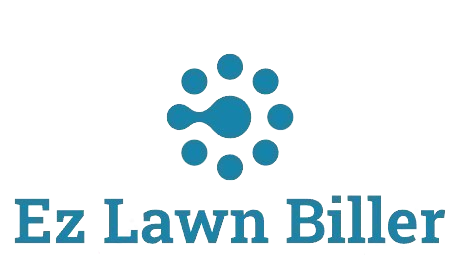Managing schedules effectively is crucial for success in the lawn care business. Discover step-by-step strategies to streamline your operations.
Step-by-Step: How to Manage Schedules in Your Lawn Business
Managing schedules in your lawn business can often feel like juggling multiple balls in the air. With an array of clients, services, and seasonal variables, keeping everything organized is a challenging task. This article will delve into practical and efficient methods to streamline your scheduling processes, ensuring your operations run smoothly and your clients remain satisfied. We will explore various tools, including the benefits of utilizing software solutions like Lawn Biller Software, to enhance your scheduling management.
In the lawn care industry, time is money. Every missed appointment or double booking can lead to dissatisfied customers and lost revenue. However, with the right strategies in place, you can take control of your schedule. This article will guide you through the essentials of schedule management, including setting up a system, utilizing technology, and implementing best practices to ensure efficiency. Whether you’re a solo entrepreneur or running a larger operation, this comprehensive guide will provide valuable insights to enhance your scheduling practices.
Understanding Your Schedule Needs
The first step in managing schedules effectively is understanding the specific scheduling needs of your lawn business. This involves assessing various factors such as the number of clients, services offered, peak seasons, and employee availability.
When analyzing your scheduling needs, consider creating a list of all services provided, such as mowing, fertilization, and landscaping. Understanding the duration of each service is essential, as it helps estimate the time required for each job. For instance, a standard lawn mowing might take 30 minutes, whereas a landscaping project could span several hours. This information will form the foundation of your scheduling system.
Additionally, consider your busiest times of the year. Lawn care businesses often see peak demand during the spring and summer months. Anticipating this demand will allow you to plan schedules proactively, ensuring that you have sufficient staff and resources available to meet client needs.
Choosing the Right Scheduling Tools
Once you’ve assessed your scheduling needs, the next step is to choose the right tools to manage them. Traditional methods like pen and paper can work for small operations, but they may lead to confusion and errors as your business grows.
Investing in digital scheduling tools or software can significantly streamline your operations. Platforms like [Lawn Biller Software](https://ezlawnbiller.com/) automate various aspects of scheduling, allowing you to manage appointments, staff assignments, and client communications all in one place. A user-friendly interface can simplify the scheduling process, making it easier for you and your team to stay organized.
Additionally, consider tools with mobile access. As a lawn care professional, you’re often out in the field. Having a scheduling solution that you can access via your smartphone or tablet ensures that you can make real-time adjustments and updates as needed, thus enhancing your efficiency.
Implementing a Schedule Management System
With your tools in place, it’s time to implement a schedule management system. Start by creating a master calendar that includes all appointments, service dates, and employee assignments. This central hub will help you visualize your entire schedule at a glance and facilitate easier decision-making.
When entering appointments, be sure to include all relevant details such as client information, service type, and duration. You can also set reminders for upcoming appointments, ensuring you never miss a job. Utilize color-coding or tags to differentiate between various types of services, which can make it easier to manage multiple clients at once.
Regularly review and adjust your schedule based on workload, weather conditions, and client preferences. This flexibility allows you to adapt to changing circumstances while keeping your clients satisfied. Communication is key—keep your clients informed about any changes to their scheduled services, so they remain in the loop.
Maximizing Efficiency with Automation
Automation is a game-changer when it comes to managing schedules in your lawn business. By automating routine tasks, you can free up time to focus on providing top-notch services to your clients. Tools like [Lawn Biller Software](https://ezlawnbiller.com/) allow you to automate billing, appointment reminders, and follow-ups, reducing the administrative burden on you and your staff.
Consider setting up automated reminders for both clients and your team. Automated texts or emails can remind clients of their upcoming service dates, which helps reduce no-shows and keeps your schedule running smoothly. Similarly, sending reminders to your team can ensure they arrive on time and prepared for their appointments.
Another advantage of automation is the ability to track and analyze your scheduling data. Use reports generated by your scheduling software to understand patterns in your business. For instance, identify the most popular services during specific months or days of the week. This information can inform your marketing efforts and help you allocate resources more effectively.
Best Practices for Schedule Management
Implementing best practices can significantly enhance your schedule management process. One key practice is to maintain open lines of communication with your clients. Encourage them to provide feedback on your services, and be proactive in addressing any concerns they might have.
Another best practice is to prioritize tasks based on urgency and importance. For example, urgent maintenance work driven by weather conditions should take precedence over routine services. By assessing the urgency of tasks, you can allocate your resources more effectively and ensure high levels of client satisfaction.
Additionally, always leave buffer time in your schedule. This allows for unexpected delays or additional work that may arise during service calls. Having flexibility in your schedule can significantly reduce stress and help you maintain a positive relationship with your clients.
Training Your Team for Effective Schedule Management
Your team plays an essential role in effective schedule management. Invest in training your staff on the scheduling system you’ve implemented and ensure that they understand the importance of adhering to the schedule.
Hold regular meetings to discuss any scheduling challenges that arise and encourage your team to share their insights. Collaborative problem-solving can lead to innovative solutions that enhance your overall scheduling process.
Encourage your team to provide input on their availability and preferences as well. This can lead to more satisfaction among employees, as they will feel valued and empowered to contribute to the scheduling process. A happy team often translates into satisfied clients.
Adapting to Seasonal Changes
Seasonal changes present unique scheduling challenges in the lawn care business. For example, during the peak season, your schedule may be packed with various services, while in the off-season, you may have fewer appointments.
Prepare your schedule by anticipating these seasonal variations and planning ahead. Consider offering promotional packages or discounts during the off-season to encourage clients to book services. This proactive approach can help you maintain a steady stream of income throughout the year.
Furthermore, consider diversifying your service offerings. Expanding into winter services such as snow removal or offering lawn preparation for spring can keep your schedule full and provide additional revenue streams.
Utilizing Customer Relationship Management (CRM) Tools
Integrating a Customer Relationship Management (CRM) tool can take your scheduling management to the next level. CRM systems allow you to centralize client information, making it easier to manage relationships and tailor services to specific client needs.
Incorporating a CRM with your scheduling software, such as [Lawn Biller Software](https://ezlawnbiller.com/), can streamline communication and ensure that all client interactions are tracked. This provides valuable insights into client preferences and service history, allowing you to personalize your offerings.
Moreover, CRM tools can help automate follow-ups and reminders, ensuring that clients are reminded of upcoming services, payments, and promotions. Such proactive communication enhances client satisfaction and loyalty.
Conclusion
Managing schedules in your lawn business is a critical component of your success. By understanding your scheduling needs, implementing effective tools, and adhering to best practices, you can streamline your operations and enhance client satisfaction.
Throughout this article, we explored various strategies, from selecting the right scheduling tools to utilizing automation and CRM systems. Each step contributes to a more organized and efficient scheduling process, ultimately leading to happier clients and a more profitable business.
As your lawn business grows, continue to adapt your scheduling strategies to meet the evolving demands of your clients and market. With a proactive approach to scheduling, you can ensure that your lawn care services thrive, even in increasingly competitive landscapes.




